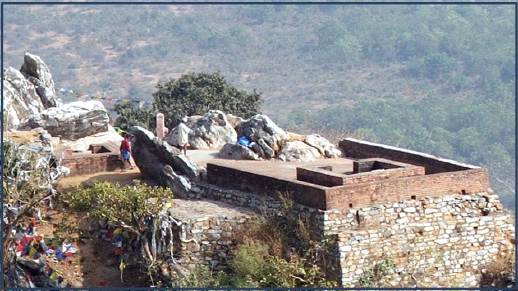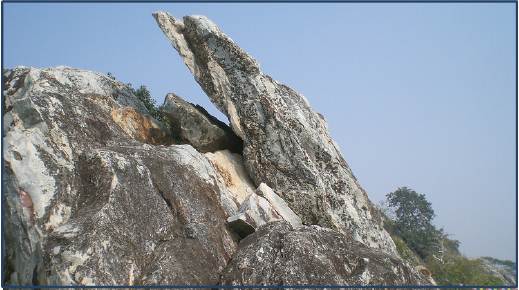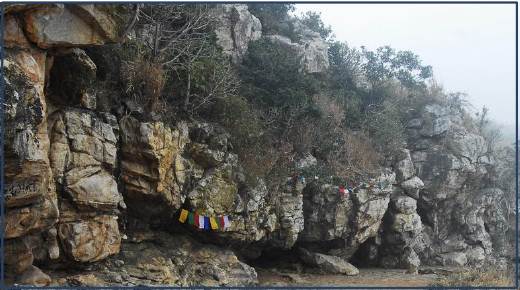| About Us | Site Map | Contact Us |
|
|
| Home | Schools & Teachings | Dharma Centers | Buddha & Bodhisattva Directory | Cosmos |
|
|
Other Buddhist Holy Sites in India
|
Patna, Bihar - Formerly known as Pataliputra, it was the seat of the Mauryan empire and a significant Buddhist center.
Two important early Buddhist councils were held here, the first at the death of the Buddha and the 3rd in the reign Emperor Asoka.
The council dealt with growing dissension within Buddhism over interpretation of the Buddha’s teachings and concluded with expelling the followers
of the Great Vehicle (Mahayana) Buddhism and the completion of the Tripitaka (Buddhist canons).
Rajgir (Bihar) formerly known as Rajagaha was the capital of Magadha (or Rajgir) , ruled by King Bimbisara, one of the most prominent monarchs and supporters during the lifetime of the Buddha. The Buddha spent 12 years in Rajgir, he spent several months meditating, and preaching at Griddhkuta, the Hill of the Vultures (fig. 1 and 2). He also delivered some of his famous sermons and converted King Bimbisara and countless others to his religion. The First Buddhist Council on one of the hills is the cave of Saptparni (fig. 3) was held under the leadership of Maha Kassapa in 483 BC. Rajgir is located in Southern Bihar, 74 kilometers from Bodhgaya and 100 kilometers from Patna. 


Nalanda, Bihar - Site of an ancient Buddhist university, as the world's earliest university established in the 5th century BC.
The word Nalanda derived from Na-Alam-Da means 'insatiable in giving'. It is believed that the Buddha had visited the place and gave sermons
near the 'Mango grove of Pavarika'. The sects of Buddhism - Theravada, Vajrayana, Mahayana and Theravada were born due to the teachings of the University.
Today, the entire Nalanda site has been divided into a number of sites that include 11 monasteries and several temples built in red bricks.
Sravasti (Uttar Pradesh), formerly known as Savatthi was the capital of Kosala Mahajanapada. The city was founded by the mythological king Sravast
and ruled by King Pasenadi, one of the most prominent monarchs and supporters during the lifetime of the Buddha. The Jetavana Vihara,
named after the Sravasti's prince Prasenjeet who donated this park to the sangha, is the holy place where the Buddha stayed for 24 years.
Inside the Vihara, the Anandabodhi tree grew up as a branch of the Sri Lankan Bodhi tree, a sapling of the original Bodhi tree in Bodh Gaya.
Besides, the ruins of Anandakuti and Gandhakuti, where the Buddha used to stay in the Vihara is another sacred place.
Buddha delivered his last sermons in Vaishali (Bihar) and announced his prospective maha-parinirvana that was to take place in Kushinagar in 483 BC.
Vaishali is also known as the site that hosted the second Buddhist council in 383 BC by King Kalasoka. One of the local attractions is Vishwa Shanti Stupa,
known as the pillar of peace, is the highest stupa of the world.
It is the location of several Buddhist monuments dating from the 3rd century BC to the 12th AD and is one of the important places of Buddhist pilgrimage.
The Buddhist caves were constructed between 630-700.
These structures consist mostly of viharas or monasteries: large, multi-storeyed buildings carved into the mountain face, including living quarters,
sleeping quarters, kitchens, and other rooms.
The most famous Buddhist caves is cave 10, a chaitya hall (chandrashala) or 'Vishvakarma cave', popularly known as the 'Carpenter's Cave'.
Ajanta Caves has about 300 rock-cut Buddhist cave monuments, dated from the 2nd century BC to about 480 or 650 AD.
Dharmasala is better known as the home in exile of the Dalai Lama as well as the home of the Tibetan government in exiles since 1960.
Over the past four decades the Tibetan community in exile has established over 200 monasteries and nunneries with enrollments of over 20,000 monks and nuns.
McLeodganj, a.k.a. the Little Lhasa, is the residence (The Tsuglagkhang Complex) of the Dalai Lama. There are larger than life images of the Buddha,
Padmasambhava, and Avalokteshwara and with prayer wheels off the sidewalk. It is recognized as a place of peace and harmony while spreading the same throughout
the world.
|
| About Us | Free Books | Site Map | Contact Us | ||
| Copyright © 1999-2020 Manjushri. All Rights Reserved. | ||
